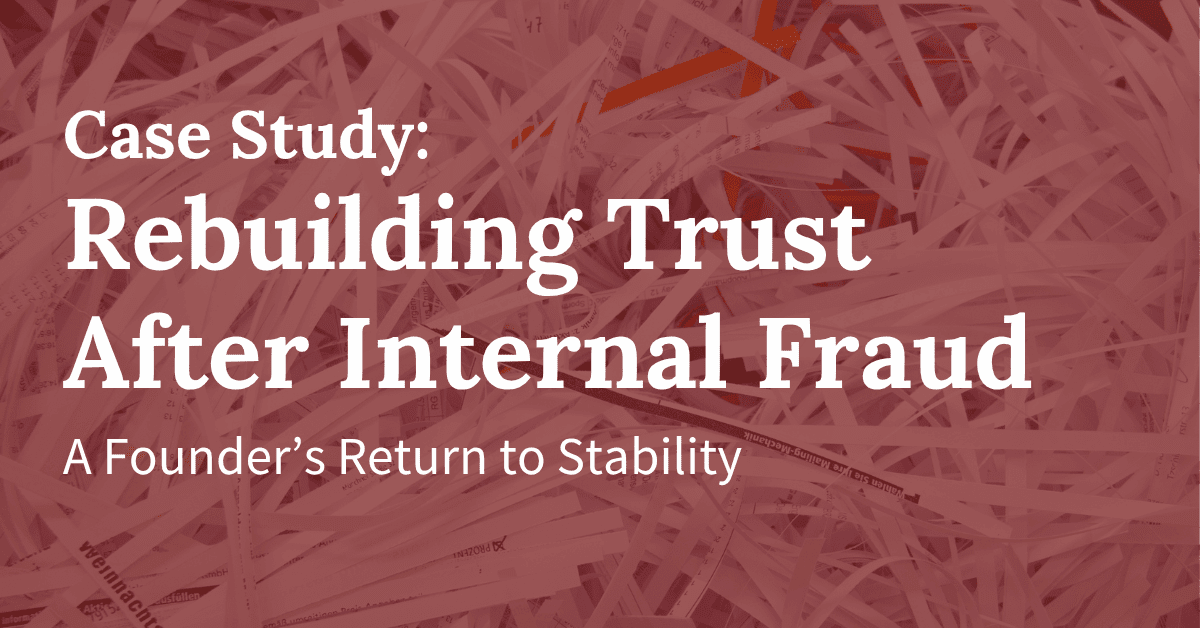This case study is relevant if you're facing:
Internal fraud or misconduct discovered after trusted employees exploited access during leadership absence. Someone you trusted with operational responsibilities has misused that access to divert funds, manipulate records, or engage in unauthorized activities that damage client relationships and organizational finances. The breach occurred while you were unavailable due to personal circumstances, medical leave, or other legitimate absences, and you're returning to discover that the foundation you built has been compromised by someone you believed was aligned with your mission and values.
Client relationships at risk due to actions taken by employees who appeared to represent your organization. Clients have paid money, shared confidential information, or made commitments based on communications from someone who had access to your systems and appeared to have authority but was actually operating outside approved protocols. You're facing potential lawsuits, demands for reimbursement, or loss of trust from clients who feel deceived, even though the founder and leadership had no knowledge of or involvement in the misconduct.
Values-driven founders confronting the reality that good intentions don't prevent betrayal. You've built your organization on ethics, transparency, and doing right by clients and stakeholders. You've been careful about hiring, you've created systems you believed were sufficient, and you've operated with integrity. The discovery that someone internal violated that trust feels like both a business crisis and a personal failure, and you're struggling with how to respond without appearing naive, incompetent, or complicit in what happened.
Immediate pressure to respond to fraud while lacking clarity on legal exposure, client obligations, or communication strategy. You know you need to act quickly to contain damage and restore trust, but you're uncertain about the right sequence of steps. Do you contact clients immediately or consult lawyers first? Do you report the employee to authorities or handle it internally? Do you make public statements or keep the matter confidential? Every decision carries risk, and you need guidance on how to move forward without creating additional liability or making the situation worse.
Organizations where a single employee had too much access and insufficient oversight allowed misconduct to continue undetected. The fraud was possible because operational controls that should have existed either weren't implemented or weren't enforced. You recognize that fixing this problem requires more than just removing the bad actor. You need to rebuild systems, restore internal legitimacy, and demonstrate to clients and stakeholders that you've addressed the underlying vulnerabilities that allowed the breach to occur in the first place.

